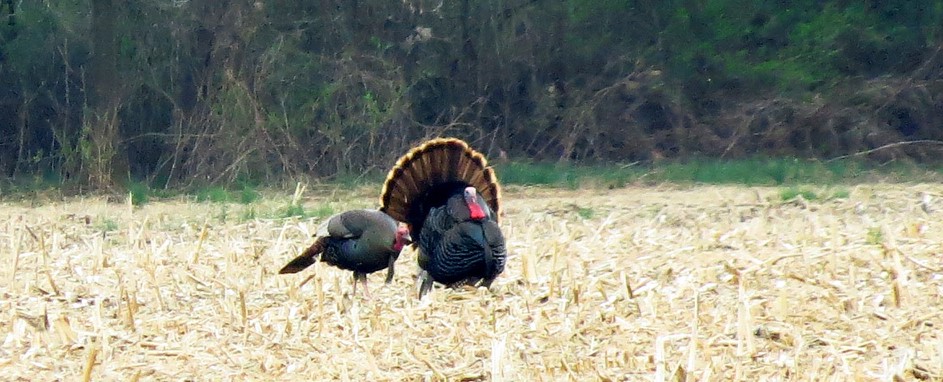Learn
by Maya Rappaport
November 24, 2020
The Wild Turkey (Meleagris gallopavo) is a familiar bird of woodlands and open meadows in North America. For those of us who love the mixed composition woodlands that dot the mid- to high-elevation regions of AZ, the sounds of a group of turkeys in the distance brings imagery of turning autumn leaves, fall mushroom hunting, and a lowering sun in the sky bringing with it shorter days and longer nights. This species also tells a story of the pitfalls of greed, and the potential of conservation programs to bring a species back from the brink of extinction.
Did you know a turkey’s wattle is called a snood? Turkeys may look a bit absurd up close, but their unique facial accessories are an important part of group dynamics. A highly social species, turkeys speak to one another with a language composed of percussive use of their feathers, a variety of postures and body language, and over 30 different kinds of vocalizations.
I grew up in the Northeast US, and in the fall and winter my family would often see large groups of turkeys in the deciduous forests of Massachusetts. Once we woke up to a group of about a dozen turkeys skittering on the roof overhead. The sightings felt more and more frequent as I aged into adulthood, and it turns out that this is because turkey populations have been steadily increasing for about 100 years. There were simply fewer turkeys around when I was young.
In the early 1900s, Wild Turkey populations dropped to perilously low numbers. As an important source of food for people of many cultures, the absence of turkeys from their historic range posed major threats to people and cultures alike. Wild turkeys have always been important to Indigenous people of the Americas, and historical evidence suggests their early domestication in Central and South America started thousands of years ago. The causes of decline in this species – over hunting and habitat destruction by colonizers – should not be glazed over. This is especially true during the time of Thanksgiving, which, from some interpretations, glorifies the genocide of Native Americans at the hands of colonizers and perpetuates and celebrates myths about what actually happened during those early meetings between cultures.
In the 1930s, conservation biologists began to work on reintroducing the species to parts of its historic range from which it had been removed. Introducing wild-bred birds to new areas proved successful, and today there are over 6 million Wild Turkeys roaming the United States. As turkeys feed on small prey like insects, rodents, and rotting carrion, they are critical parts of their native habitat systems. They also provide food for larger carnivores. Beyond their “utility” in a habitat, Wild Turkeys are a hallmark species of the Americas, bringing unquantifiable and invaluable beauty and character to the natural world.
In Arizona, you can see Wild Turkeys at elevations ranging from 3,500 to 10,000 feet in a variety of habitats, including Ponderosa Pine and other forest types. I often see them in the summer in edge habitat between meadows and forests up here in Flagstaff. I love to listen to their soft language of clucks and chatter as they forage together in the leaf litter.
Have you seen turkeys by the Verde River? If so, tell us where! The Verde allows the growth of many different habitat types, promoting turkey populations and healthy populations of over 250 other species of birds.






